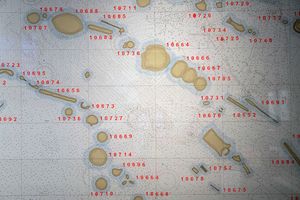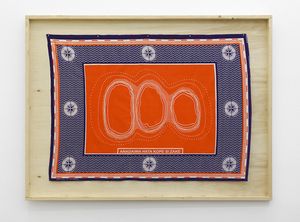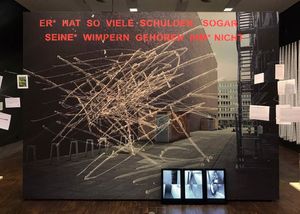A Topography of Loss
2021
The storage depot of the Rautenstrauch-Joest Museum is deep underground, in a cavernous room of polished concrete floors and walls filled with a fully automated, five-metre high stainless storage system. In each of these shelves, in sheets of foam cut to precisely 120x80cm, we found the objects of the collection. Approximately 65,000 objects lie in hand-cut, material-lined depressions.
These negative spaces appeared to describe the loss of the objects from their communities of origin, both literally but also metaphorically. The immense number of depressions, each of which had been individually tailored to a particular object, seemed to speak of a museum approach which was both almost industrial in scale, yet was individually applied to unique artefacts. These negative spaces were not only bespoke prison cells, they also seemed to us like footprints that the objects had left behind.
We started to explore the particular depressions left by the eighty-three Kenyan objects that the museum has in its collection. We began to imagine these depressions as hills and mountains—as a kind of landscape of loss. And, as our ideas evolved, these hills became islands scattered in a vast ocean, a way for us to start to think through and represent the knowledge that was lost when these objects were taken from Kenya. They seemed to describe A Topography of Loss.
Thanks to: International Inventories Programme (Project) Invisible Inventories (Exhibition). Supported by: Goethe Institut Exzellenz Initiative, Kulturstiftung des Bundesfull project


